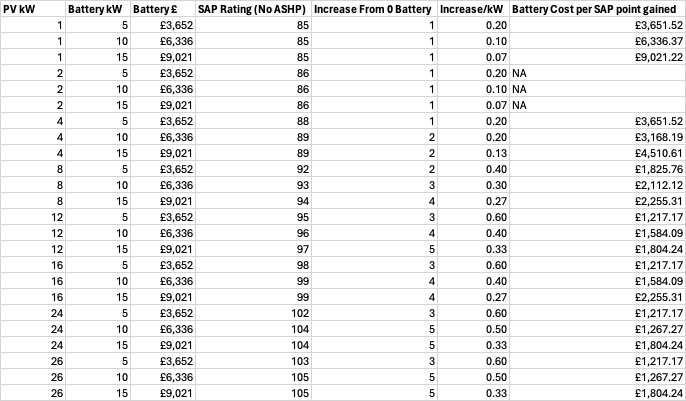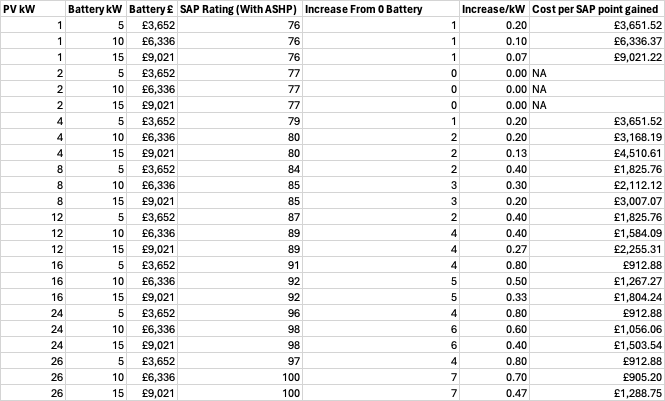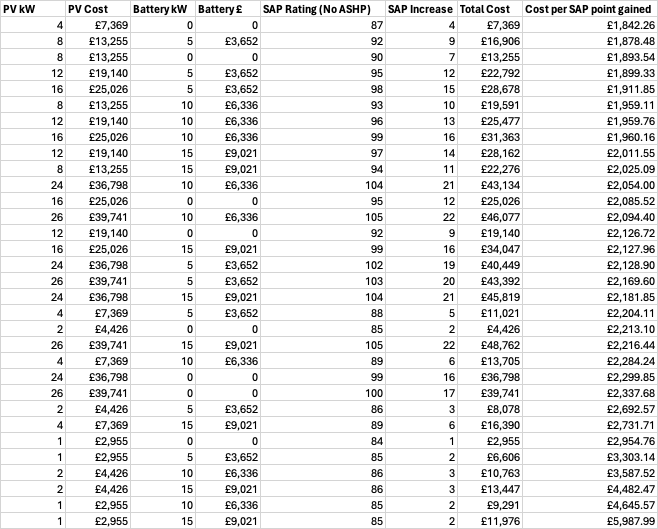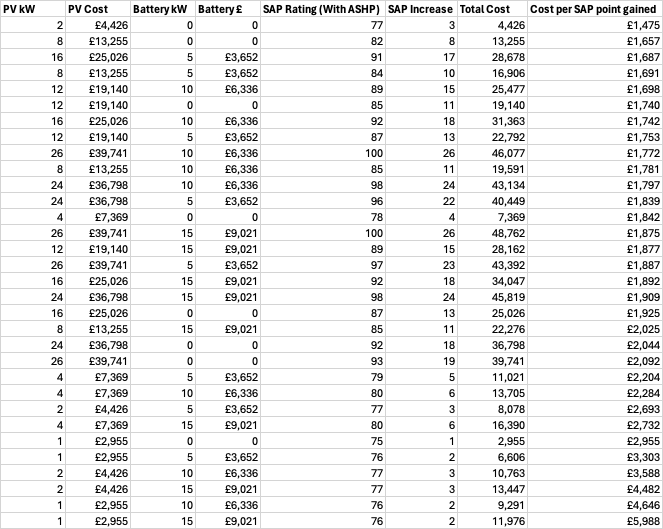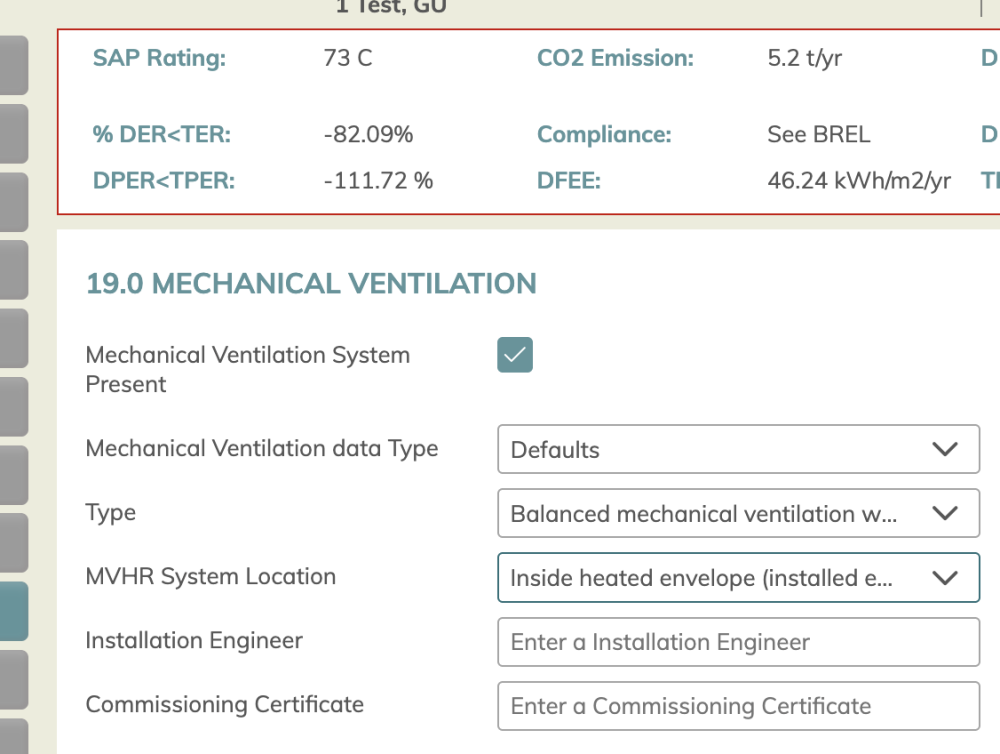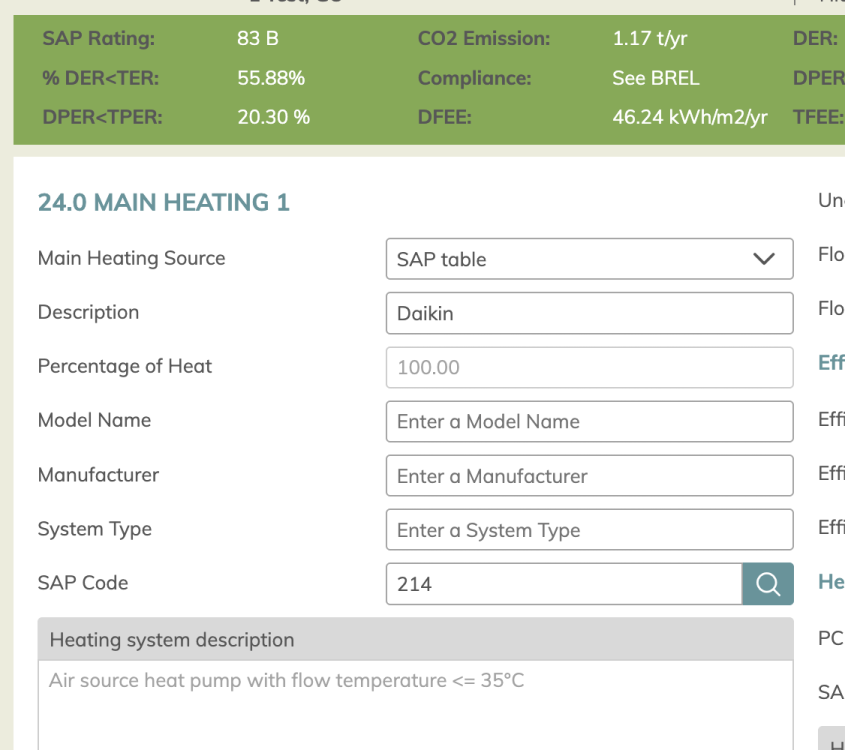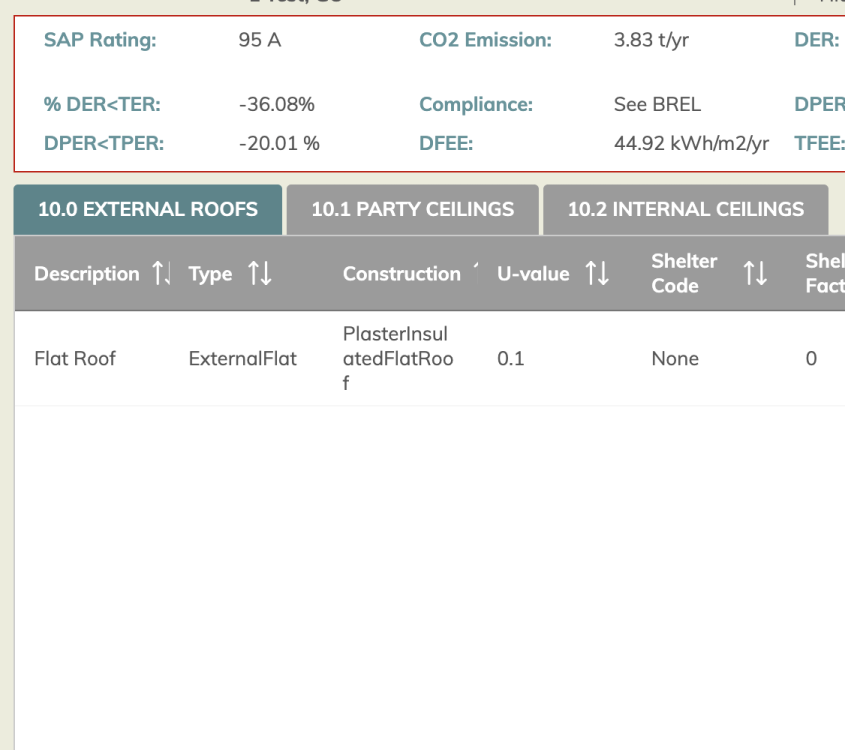
miike
Members-
Posts
86 -
Joined
-
Last visited
Everything posted by miike
-
Been to similar before and I found exhibitions with a b2c focus aren't of much value - they're basically just a way for businesses to source customer leads who are willing to pay £££. B2B exhibitions tend to be more useful as you can source direct from manufacturers at better prices.
-
Selling 1 plot is less work than selling 2 plots, is probably the main thought process of the previous owner.
-
If you have pp for 2 houses, 2 acres, and a tight budget, why not sell part of the plot with pp for 1 house to help fund your build?
-
Big money on eco upgrades for a 8 point DROP on SAP
miike replied to miike's topic in General Self Build & DIY Discussion
I spent some time putting together the differences battery size makes when paired with different PV systems. It varies quite a lot on the PV kWp and also whether or not you have an ASHP. Figures used for PV/Battery costs are from here 1. This shows the gain from PV with no battery and no ASHP 2. PV, no battery, with ASHP 3. Battery sizes (5, 10 and 15 kW) paired with different PV kWp. No ASHP 4. Battery sizes (5, 10 and 15 kW) paired with different PV kWp. With ASHP 5. Ranked by cheapest cost (total cost of PV + Battery) per SAP point gained. No ASHP 6. Ranked by cheapest cost (total cost of PV + Battery) per SAP point gained. With ASHP -
Big money on eco upgrades for a 8 point DROP on SAP
miike replied to miike's topic in General Self Build & DIY Discussion
Elmhurst Energy, there's a 14 day free trial here but the actual license fee isn't too bad. I think they took over Stroma, which was who I'd seen recommended here previously. -
Big money on eco upgrades for a 8 point DROP on SAP
miike replied to miike's topic in General Self Build & DIY Discussion
SAP 10.2, it's the latest version used for all post 2022 builds. -
Big money on eco upgrades for a 8 point DROP on SAP
miike replied to miike's topic in General Self Build & DIY Discussion
Yes, took ages copying all the details into the new one before making changes. That 100% isn't for efficiency, it's for percentage of heat i.e. how much of the heating for the house is done by that unit (for situations where you have multiple sources). -
Big money on eco upgrades for a 8 point DROP on SAP
miike replied to miike's topic in General Self Build & DIY Discussion
This is all done on the latest SAP 10 standards. I've attached some screenshots showing the score change from making one alteration to the spec, leaving all else the same. I reset the spec to the original before changing a new data field. I start on 87 B with no ASHP or MVHR, 0.15 u for roof and 0.1 u for walls. Air Tightness - no change in score between 6.60 and 0.10 Roof u-value (251m2 gross area) - 1 point change between 0.35 u value and 0.05 Adding MVHR - 5 point reduction to 82 Adding 6kW PV + 12 kWh battery - increase of 8 points to 95 Changes to data but keeping the PV and battery in the spec: Main heating source changed from mains gas to ASHP - 12 point reduction to 83 Flat roof u-value - improving u-value from 0.15 to 0.1 has no effect. Worsening the u-value to 0.7 drops the score by 3 points to 92 -
My design SAP used a lot of standard assumed data, such as double glazed windows, no MVHR, gas boiler, numerous openings for air extraction etc. It had a score of 87 B. The actual build used significantly more insulation, 3G windows, MVHR, ASHP. The costs of the upgrades would be in the tens of £ks. After submitting all this info, my energy performance was downgraded to a C with an 8 point drop to 79. I thought the assessor must be entering something wrong so I got access to a trial version of SAP assessment program and re-did the info myself. Nope, it somehow actually gave me an even lower score of 73. I removed the MVHR and added vents, changed the ASHP to a mains gas boiler and straight back to 87. I understand how these can drop a SAP score because it focuses on electricity costs and these are electric devices, but it was interesting to see that none of the other improvements moved the needle by a single point. Out of curiosity, I started playing with some of the data and gave it an air tightness score of just above 0 and boosted the u-values of all the materials - I managed to get 1 additional point. The only thing that made any real difference was adding PV and a battery, which took it from between 93 to 100, depending on the kWh inputted. The lesson seems to be, if you want an A rating, is to keep everything standard, no 'eco' heating or ventilation systems, minimum insulation for building regs, and then just add a bit of PV. Might be useful for anyone needing to qualify for an Ecology mortgage.
-
Using PIR boards to backfill garden path
miike posted a topic in General Self Build & DIY Discussion
I've got a lot of left over PIR insulation boards, enough to fill a 12 yard skip, and have being trying to think of a possible way they could be used instead of paying £500 to just bin them. They're an awkward mix of sizes, tapered, and cuts, so selling them would be tough. At the same time, I have a sloping garden path which needs c400mm of backfilling. The ground is sandstone. Would there be anything problematic about laying some of the boards down first, prior to filling with the remaining aggregates? It would halve the amount of aggregates I'd then need to use. I've heard of people using PIR boards under soil in planters, to insulate the plants during the winter, so I assume they have some garden utility. -
Is the grant valid if you buy a preowned ASHP?
miike replied to miike's topic in Air Source Heat Pumps (ASHP)
It's a full new build, so no existing heating system. It's also reasonably well insulated - I've been monitoring the internal temperature and it seems to lose 1C overnight, with a 10C difference in external temperatures. The issue I have is size - it's c5500 sqft. Hybrid system is an interesting suggestion, I've already connected gas so could definitely be an option. I'll have a look into that. -
Is the grant valid if you buy a preowned ASHP?
miike replied to miike's topic in Air Source Heat Pumps (ASHP)
You're right that a used unit is probably not worth the hassle. Issue I have, is that I need a min 15kW unit and 300L cylinder, which gets on the more expensive side of units. I've written off the grant as just covering labour install, so I still have £7k+ of supply costs. Has anyone ordered units from Alibaba before? I recognise a few units which are rebranded in the UK but are just imports from the same manufacturer in China. I've ordered a lot through Alibaba in the past for work and the hardest part is knowing which company to trust and buy from. -
I'm struggling to get a firm answer on this, but does anyone know if the gov ASHP grant would still be paid out if the pump you install was preowned? My plumber said that as part of the grant process, he registers the unit with them before they pay out the grant. The issue that I can see arising here, if the unit is preowned, is what if it had already been registered by the previous owner to get the grant? My plumber was unsure, and I can't find any specific details relating to this. Has anyone had any experience with this situation?
-
Attaching breather membrane?
miike replied to junglejim's topic in Structural Insulated Panels (SIPs)
I got a DeWalt heavy duty stapler that has no issues going into OSB. It requires quite a bit of pressure to use though, which you can certainly feel after a few thousand staples. -
Does anyone remember 2-3 years ago the Tories had a similar plan to increase building and cut red tape - and then they immediately lost some local elections in response to the plans so they completely backed down on them? And they're the party that gets a substantial % of their donations from house builders. I can't see a different pattern playing out with Labour as at the end of the day, the only thing that really matters is votes and c80% people who are 65+ vote vs just over 50% of people under 34. And nothing unites the older demographic of the UK like opposing new homes does.
-
I wonder how CIL liability and commencement works if it's extending an already existing house - you have 3 years to start from pp but what if you want to do other permitted development works first? Maybe you want to replace the roof or other significant works. What if in this situation the home owner had responded that they hadn't commenced works on the CIL liable work, they're just doing a separate extension which doesn't require pp?
-
13k sqft self build in Hertfordshire
miike replied to LadybuilderLOL's topic in Insulated Concrete Formwork (ICF)
What is the sqm of the actual living areas? Looks to me like <50% of the 13k sqft is actual living space, with the rest as garages/courtyards/terraces. If I'm correct, then I think it could be built for a lot less than some of the above estimates. I recently built a not entirely dissimilar 3 storey house on a sloped site with 500m2 internal space + ~200m2 of terraces. The semi-submerged basement used two skins of blockwork, with a concrete filled cavity. The upper two floors were built with brick/block. There's about 75 structural steel beams. I would suggest looking at this method of construction rather than other more specialist types. I'd then approach groundworks companies and only provide limited drawings and ask to quote for specific sections - eg. the excavation, slab and blockwork for the basement floor. If you send all these drawings over then you'll probably get 50% added on to the price as they'll assume you can afford it based on the design. Excluding windows, I'd expect c£1m for building the shell of this house. You should budget for a lift though if you're going to have parking on the basement floor and the kitchen two floors above - it's quite a journey when bringing in grocery shopping. -
I've looked into this previously. Plenty of metal fabricators can make the spine and a fairly reasonable price - I was quoted <£3k for a steel spine with 2 bends in it. They wanted to wait until the final floor finishes were in to measure though. They said they had 3rd party providers who could provide the oak treads + glass balustrades, and they could install the stairs. This added massively to the cost - came to about £15k.
-
Getting towards the end of my build and I've been reflecting on what I would have done differently if I started again. For me, the biggest obstacle during building was the weather. The rain was incessant - there was barely a full day without at least some rain. This caused big delays as the constant stopping of brickwork caused knock-on effects of other scheduled work. As an example, we had a window production slot booked but they wanted the 'as-built' measurements of the openings, but the brickwork couldn't be finished in time so we missed the slot and got put to the back of the queue. I would say an extra 6 months got added onto the build because of the weather. If I was building again, the number 1 thing I'd do differently is fork out for the cost of a temporary scaffolding roof right at the start. I didn't even consider it originally due to the cost (c£15k) but if it could have allowed us to ignore the rain then it would have paid for itself several times over. I'm curious what others would do differently after they've got the experience of their first house build under them?
-
I'm not sure how many conclusions you can make from this survey for social relations impacting the adoption of heat pumps as the questions are quite limited. For me it was 100% financial, and I was only interested after the £7.5k grant was introduced - the previous one at £5k wasn't worth it for me, and the £7.5k only really puts the ASHP on equal ground with a gas boiler. Without the grant, I think interest in heat pumps would drop to basically 0 until the price comes way down, regardless of how much friends/family recommend them.
-
Can minimum u-values be averaged across all flat roofs?
miike replied to miike's topic in Heat Insulation
Ah I've been looking at the 'notional dwelling specification' and reading it as the standard which must be achieved. The limiting fabric u-value of 0.20 makes things much easier. The 0.13 came from the target value for the pre-2022 regs. -
For a pre-2022 Part L building reg on new builds, the min u-value is 0.13 for flat roofs. If the building has multiple flat roofs and terraces, does the SAP assessor/bc work out the worst performing part of the roof and pass/fail based on whether this is within the min values? I'm wondering if the u-value can be averaged out across all areas - for example equal parts are 0.11 and 0.15. I've heard that the SAP assessor can also consider the building performance as a whole, and a below standard roof can be offset by improvements in other areas. However, I haven't been able to find confirmation of this. Is anyone familiar with these rules who can advise?
-
I have a £250k CIL exemption on my build so I've also been naturally paranoid about falling through into one of the loopholes that loses you the exemption. My CIL officer was helpful though - I submitted all the necessary forms, then asked them to confirm that I have done everything correctly and if I can now submit the building commencement notice. They confirmed in writing, then I submitted the commencement notice, and after they acknowledged it, I once again asked them to confirm in writing that all necessary steps for the CIL self build exemption have been completed. They replied back saying I was good to go and what the remaining steps would be once the building was complete. Prior to the building commencement date, I didn't even go on the plot with so much as a pair of hedge trimmers in fear of being accused of starting work (I think in reality it's when you bring on heavy machinery). You can ask your officer to explicitly state that all steps have been completed so far, and if you can now submit the commencement notice.
-
Why are you paying a right to light surveyor to come out? It has already been granted planning permission, and planners seemingly took this into account. Are you planning to change the design and submit a new application based off the new assessment? If you're not, then what benefit will the new assessment be to you? Do you have an example of a single case anywhere in the UK where someone has been granted planning permission, built to their approved design, and then been successfully sued by their neighbour for loss of light? If not, what exactly are you worrying (and spending money) about?




